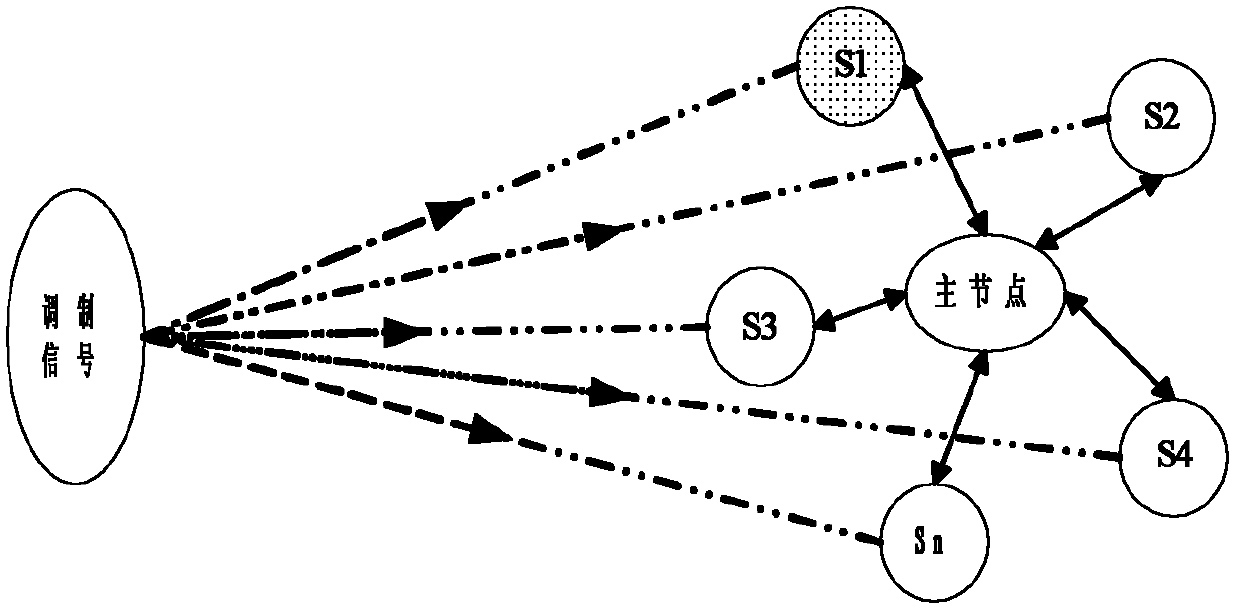Method for carrying out modulation recognition through distributed cooperation of multiple sensor nodes
A distributed collaboration, sensor node technology, applied in the field of communication, can solve the problems of low recognition rate and unreliability, achieve the effect of flexible and reliable system and improve the modulation recognition rate
- Summary
- Abstract
- Description
- Claims
- Application Information
AI Technical Summary
Problems solved by technology
Method used
Image
Examples
Embodiment Construction
[0015] The invention provides a method for identifying digital modulation signals through distributed cooperation of multiple sensor nodes in a wireless sensor network. This method aims at the disadvantage of low modulation recognition rate of a single receiving node in a fading channel with low signal-to-noise ratio. Under the premise of the minimum energy consumption of each sensor node, an effective cooperation scheme is designed according to the size of the receiving signal-to-noise ratio, and a new combination of characteristic parameters reflecting significant differences in modulation types is obtained, and then the artificial neural network is used to identify the digital modulation signal, and the Different network conditions provide different collaboration solutions. Compared with single-node modulation recognition, the multi-sensor node distributed cooperative modulation recognition method has a higher recognition rate in fading channels, and the node system is more...
PUM
 Login to View More
Login to View More Abstract
Description
Claims
Application Information
 Login to View More
Login to View More - R&D
- Intellectual Property
- Life Sciences
- Materials
- Tech Scout
- Unparalleled Data Quality
- Higher Quality Content
- 60% Fewer Hallucinations
Browse by: Latest US Patents, China's latest patents, Technical Efficacy Thesaurus, Application Domain, Technology Topic, Popular Technical Reports.
© 2025 PatSnap. All rights reserved.Legal|Privacy policy|Modern Slavery Act Transparency Statement|Sitemap|About US| Contact US: help@patsnap.com



